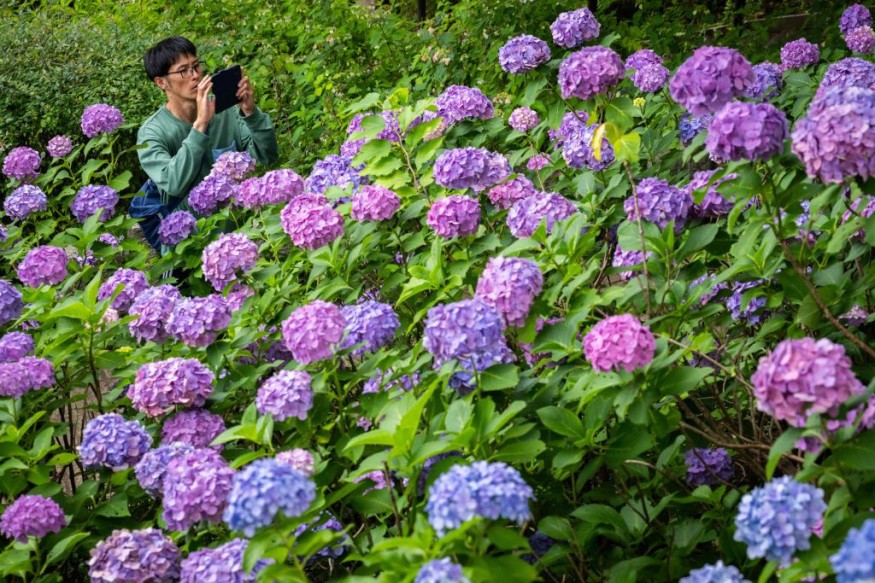
An expert said that altering the soil quality and composition could change the color of hydrangea blossoms.
Bigleaf Hydrangea
Bigleaf hydrangeas, which are frequently bought as gift plants, can be placed in landscapes and appreciated year after year.
The Bigleaf hydrangea thrives in soil that is moist and well-drained, and it particularly enjoys receiving light in the morning while appreciating some shade in the afternoon. It will wilt and may need additional watering in regions with afternoon light.
Expect the plant to not tolerate direct sunlight. In the sweltering summer, hydrangeas lose more water due to their big leaves.
So, when given a reprieve from the sun, hydrangeas thrive.
This flowefing plant is simple to cultivate in pots and makes great patio plants. The ability to bring the plant indoors on a chilly night is a benefit of growing it in a container.
Bloom Colors
The plant is noted for its bloom colors, which can be changed from pink to blue as well as from blue to pink by modifying the pH of the soil.
The color fluctuation is caused by the presence or lack of aluminum compounds in the flowers. The plant is also known as a French, Japanese, or snowball hydrangea.
Blue flowers indicate the presence of aluminum in the plant. The hue of the blossoms will be pink if it is present in little amounts, violet if it is lacking, or something in between.
Soil Quality and Content
By influencing the amount of aluminum in the soil, soil pH indirectly influences flower color.
Aluminum is typically more available to the roots in soil that has a pH of 5.5 or below, which is considered to be acidic. Aluminum levels fall when the soil has a pH of 7.0 or higher, which is neutral or alkaline.
Spread half a cup of wettable sulfur for every 10 square feet and soak it into the soil to gradually turn pink flowers blue. Spread a cup of dolomitic lime for every 10 square feet and soak it into the soil to turn the flowers pink. All year round, granular products can be used at any time.
However, it can take a year to detect a substantial difference, changing the color of hydrangea flowers requires patience, University of Georgia CAES Newswire noted.
Mood Ring Blooms
Aluminum is toxic to most plants, but hydrangeas, especially the macrophyllas, and serratas, tolerate just a tiny amount of it and that is what gives us blue, according to Mal Condon, the Heritage Museums and Gardens curator of hydrangeas and more aptly known as "the Hydrangea Guy."
The garden's soil conditions can be read from hydrangeas in a similar way to a mood ring.
In general, soil with more metal produces blue blooms, whereas soil with minimal or no aluminum produces more pink or red blossoms, as per CNET.
Does Copper and Coffee Hack Work?
Some say that copper pennies, rusty nails, or discarded coffee grounds work.
However, as was already mentioned, bigleaf hydrangeas require aluminum to turn blue rather than iron or copper.
Because used coffee grounds have a pH of 7, they won't contribute to the soil becoming more acidic.
Although brewed coffee and fresh grounds are acidic, you would need to apply them frequently throughout the growing season to have an impact on pH, according to Better Homes & Gardens.
Related Article : 5 Native Black Flowers for Home Gardens in the US
© 2025 NatureWorldNews.com All rights reserved. Do not reproduce without permission.




